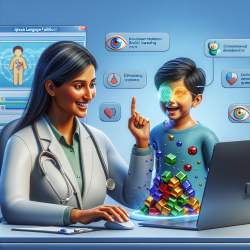As a practitioner in the field of audiology, it's crucial to stay updated with the latest advancements and methodologies to provide the best care for your patients. One such breakthrough in hearing healthcare is tele-audiology, a concept explored in depth in the research article "Breaking Sound Barriers: Exploring Tele-Audiology's Impact on Hearing Healthcare" by Lin, Chen, and Milln. This blog will delve into the key findings of the research and how you can implement these outcomes to enhance your practice.
Why Tele-Audiology?
Hearing impairment is a significant global issue, with over 1.5 billion individuals affected. Traditional clinical pathways often fall short in reaching all those in need, especially in rural and low-income areas. Tele-audiology offers a solution by providing remote hearing healthcare services, thereby reducing travel costs and time for patients.
Key Findings and Implementation Strategies
- Remote Hearing Screening: The research indicates that remote hearing screening and intervention are non-inferior to traditional methods. You can incorporate smartphone-based apps and game-based hearing screening programs to identify hearing loss efficiently.
- Diagnostic Testing: Tele-audiology has proven effective in diagnosing conditions like otitis media through remote otoscopic examinations and tympanometry. Implementing these methods can enhance diagnostic accuracy and patient satisfaction.
- Hearing Aids: Remote consultations and programming for hearing aids are as effective as in-person visits. Using tele-audiology, you can provide follow-up consultations and troubleshooting, improving patient outcomes and satisfaction.
- Cochlear Implants: Tele-audiology can streamline the process of cochlear implant evaluations and programming, making it more efficient and accessible. Automated remote intraoperative testing has shown promising results.
- Therapies for Tinnitus: Internet-based Cognitive Behavioral Therapy (iCBT) and Progressive Tinnitus Management (Tele-PTM) have been effective in reducing tinnitus distress and comorbidities. Incorporating these therapies can offer significant benefits to your patients.
Challenges and Future Directions
Despite its potential, tele-audiology faces several challenges, including high infrastructure costs, limited reimbursement, and the need for quality standards. Overcoming these obstacles requires concerted efforts from healthcare providers, policymakers, and technology developers.
Future research aims to develop integrated models with evidence-based protocols and incorporate AI to enhance the affordability and accessibility of hearing healthcare. By staying informed and adapting to these advancements, you can significantly improve the quality of care you provide.
To read the original research paper, please follow this link: Breaking Sound Barriers: Exploring Tele-Audiology's Impact on Hearing Healthcare.










